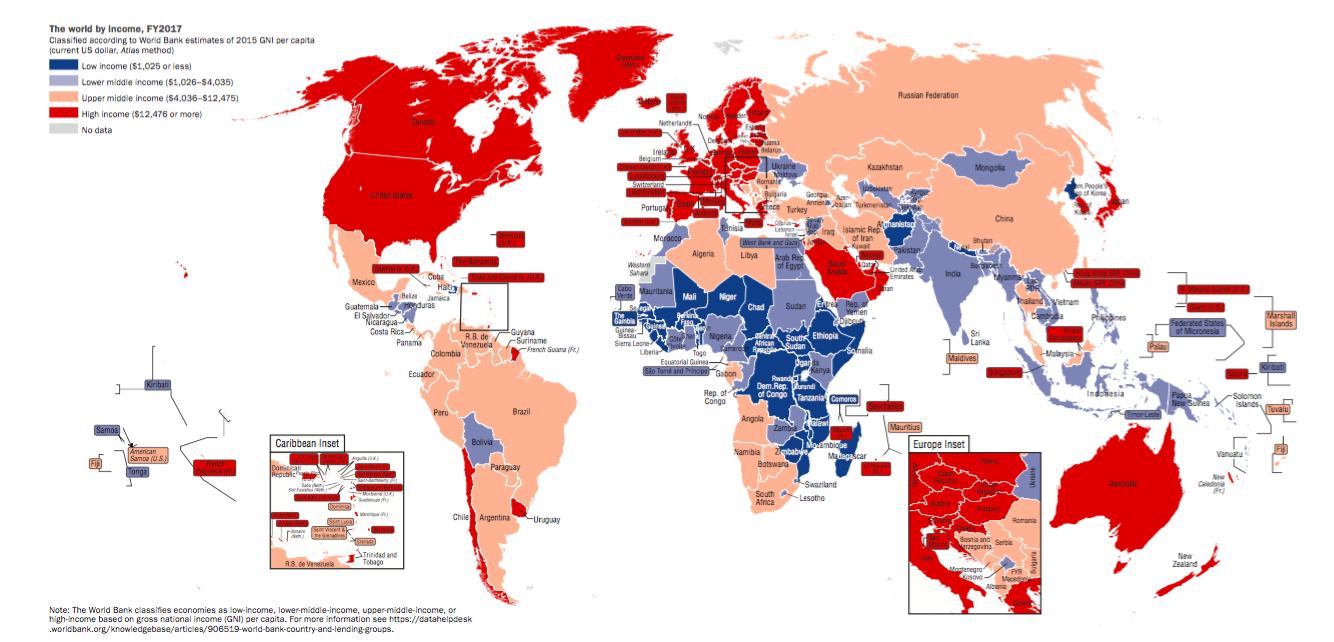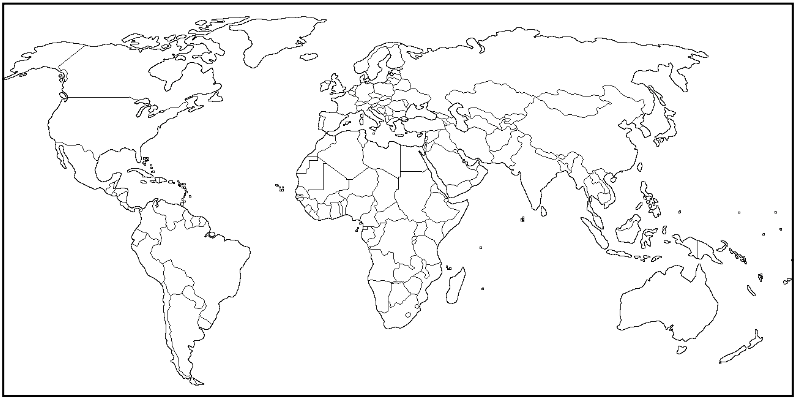Global patterns of economic development
The Subject Guide
Global patterns and classifications of economic development:
- low income countries
- middle income countries and emerging economies
- high income countries
A. The 25 richest, healthiest, happiest, and most advanced countries in the world?
Watch the video clip below and consider the following questions:
- What methods could we use to measure the wealth, health and happiness of a country?
- What problems might be faced in trying to measure these? Which do you consider will be most difficult to measure and why?
- Why do geographers and other social scientists often use GDP per capital (PPP) as an indicator of the overall development of a country?
B. World Bank Classification Of Countries
1. Study the map below which shows the World Bank classifications of countries by income.
2. Use the map and the World Bank website to produce a SIMPLIFIED and ANNOTATED sketch map to show the spatial distribution of the low, middle and high income countries.
3. Write a paragraph describing the distribution: your paragraph should reference each continent. Remember to identify and explain anomalies as well as overall patterns and trends.Name countries and use specifics in your description.
4. Use the World Bank website to explain how each group of countries is defined by income.
3. Write a paragraph describing the distribution: your paragraph should reference each continent. Remember to identify and explain anomalies as well as overall patterns and trends.Name countries and use specifics in your description.
4. Use the World Bank website to explain how each group of countries is defined by income.
C. Emerging Economies
1. Read the article on characteristics of NICs and watch the video on BRICS.
2. Create a spider diagram to show the key characteristics of NICS.
3. How do these emerging economies differ from other low or middle income countries?
4. How can you explain the importance of this group of countries?
2. Create a spider diagram to show the key characteristics of NICS.
3. How do these emerging economies differ from other low or middle income countries?
4. How can you explain the importance of this group of countries?
D. Dollar Street: Quality of Life
1) Choose one country to represent each of:
- low income countries
- middle income countries
- high income countries
- an emerging economy
- The range of incomes in the country (comment on the gap between rich and poor)
- Quality of life for people living in the country. to do this you will need to "visit" several families and examine their lives, possessions, cooking, education etc.

E. Mini-essay
- Use the map in section B to describe and explain global patterns of economic development.
- Critically evaluate the world bank classification of countries into High, Middle and Low income.
- What are the strengths and weaknesses of using a choropleth map like that in B to show spatial distribution of wealth.
F. Additional Reading
- Geography Course Companion (Nagle and Cook) - pp388-391
- Planet Geography (Codrington) - pp


